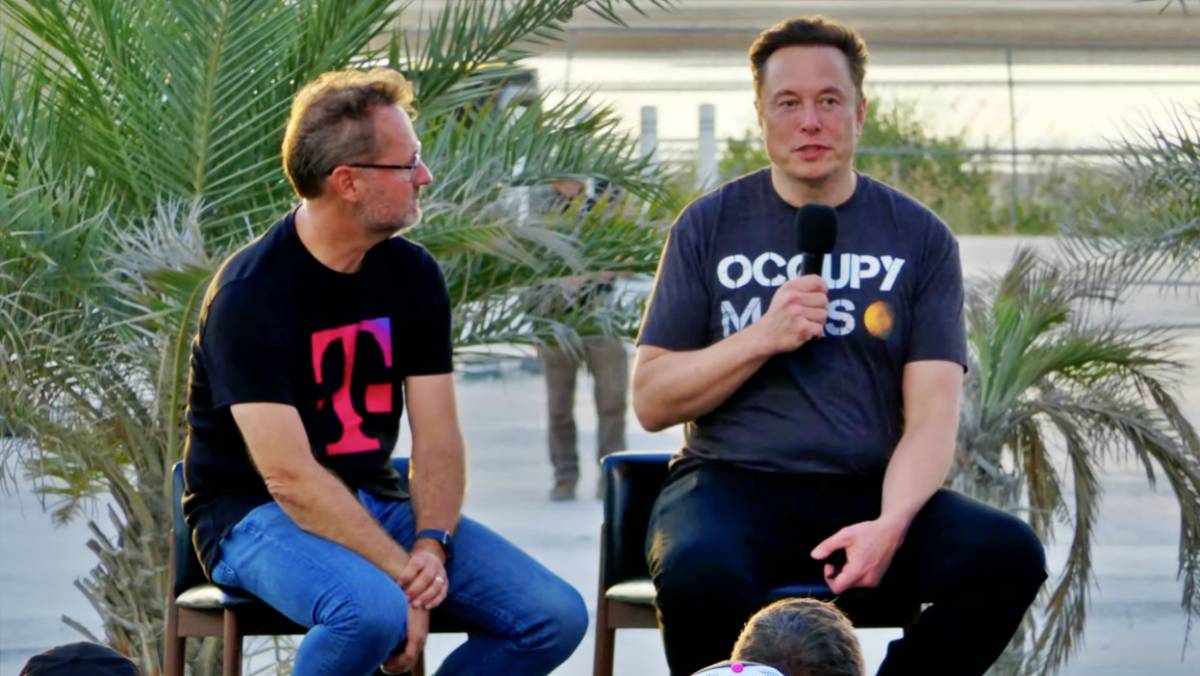T-Mobile and SpaceX have announced that they will deliver a new service over T-Mobile networks. This service will provide access to Starlink satellites for most smartphones. The initiative’s theme is “Coverage Above and Beyond,” and it will be implemented starting next year.
They also organized the live event, which was broadcast live on SpaceX’s official YouTube page. Mike Sievert, the CEO of T-Mobile, and Elon Musk, the chief engineer of SpaceX, participated in this event.
Starlink Satellites in Mobile
The new technology will utilize SpaceX’s Starlink satellites of the second generation, which are located in low Earth orbit, in conjunction with T-Mobile’s mid-band 5G spectrum to provide “near complete coverage” in most areas across the United States, in addition to territorial waters.
If the technology were to be implemented successfully, it would do away with the concept of “mobile dead zones” and enable consumers to remain connected even when they are out of the range of cell towers. This would be particularly useful in times of crisis, implying that even in areas without nearby earthbound cell towers, your 5G phone will be able to access the internet.
Read Also: SpaceX Announces Lower Priced Starlink service
Both T-Mobile and SpaceX have said that they want to offer this service to people worldwide in the future. They are working toward this goal by establishing roaming agreements with other international carriers.
SpaceX CEO Elon Musk said, “The important thing about this is that it means there are no dead zones anywhere in the world for your cell phone,” announcing the plan. “We’re incredibly excited to do this with T-Mobile.”
How will it work
The companies will build a new network to provide this service that will use T-countrywide Mobile’s mid-band spectrum while being transmitted from Starlink satellites. Nearly anywhere a user can see this real satellite-to-cellular service will cover the sky.
By the end of next year, following SpaceX’s anticipated satellite launches, T-Mobile hopes to offer customers text coverage virtually everywhere in the continental US, Hawaii, some areas of Alaska, Puerto Rico, and territorial waters. This service will also be available outside the signal of T-Mobile. Mobile customers will be able to remain in touch and share experiences almost anywhere via text messaging, including SMS, MMS, and participating messaging applications. The corporations want to pursue the expansion of voice and data coverage after that.
“Today’s news is the next step in T-Mobile’s quest to deliver Coverage Beyond. Earlier this year, the Un-carrier gave customers enhanced connectivity beyond the reach of its network – in the air and abroad. Today’s move is the next step on the path to provide the ultimate coverage experience.”
The satellite connectivity speed
According to Elon Musk, the second generation of Starlink satellites could transmit data rates of up to 2-4 Mbps to each cell zone. Such speeds would be sufficient for sending and receiving text messages and phone calls in the future when the latter feature is implemented.
The exact speeds would be determined by the number of T-Mobile users using the service simultaneously inside a particular cell zone. Musk has said that there is a possibility that users would be able to play “a little bit” of video in the future, provided that a cell is not particularly busy. Nevertheless, the service is not meant for this kind of use but is built for basic communication purposes.
“Today’s news is the next step in T-Mobile’s quest to deliver Coverage Beyond. Earlier this year, the Un-carrier gave customers enhanced connectivity beyond the reach of its network – in the air and abroad. Today’s move is the next step to providing the ultimate coverage experience.”
